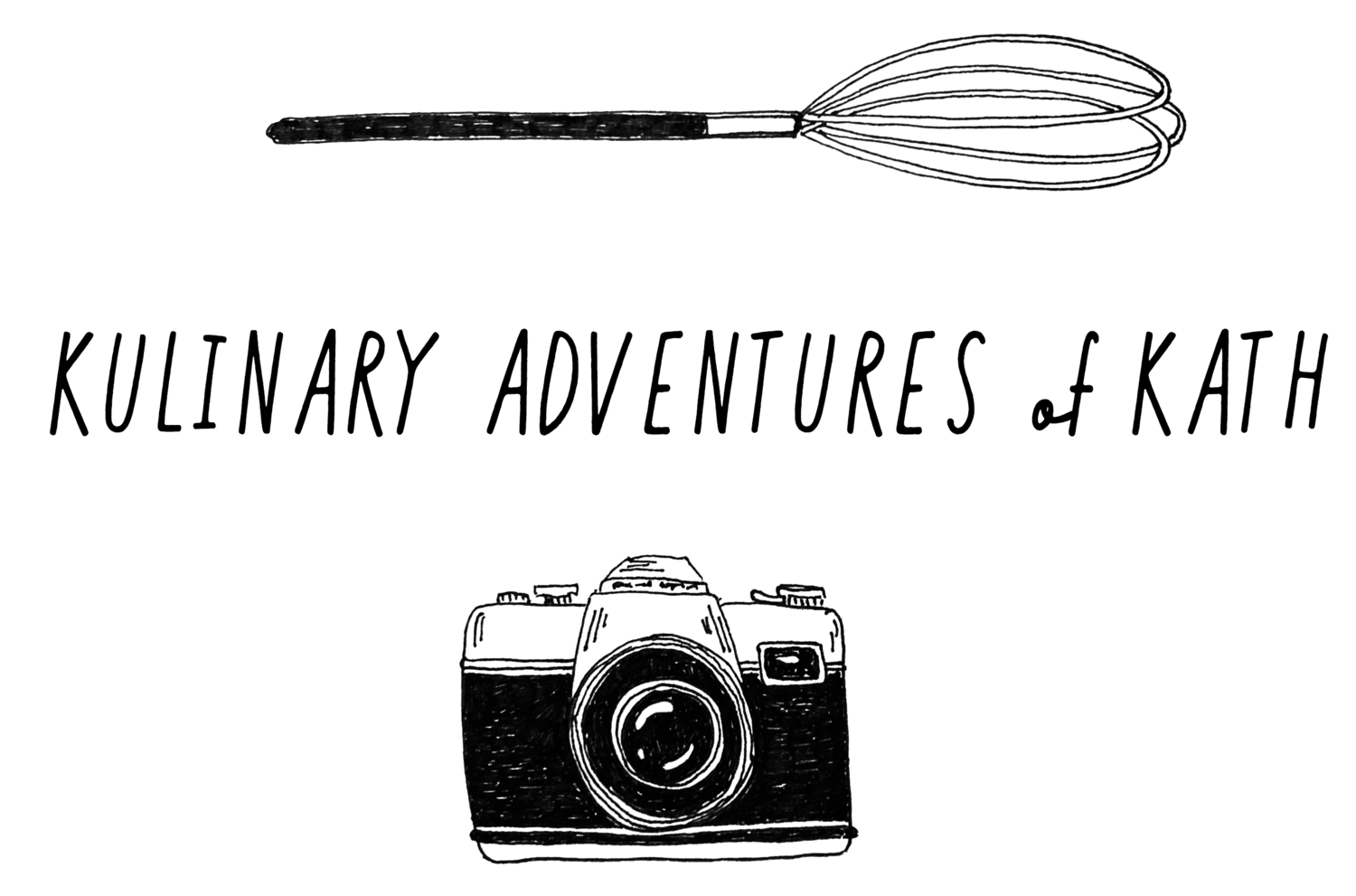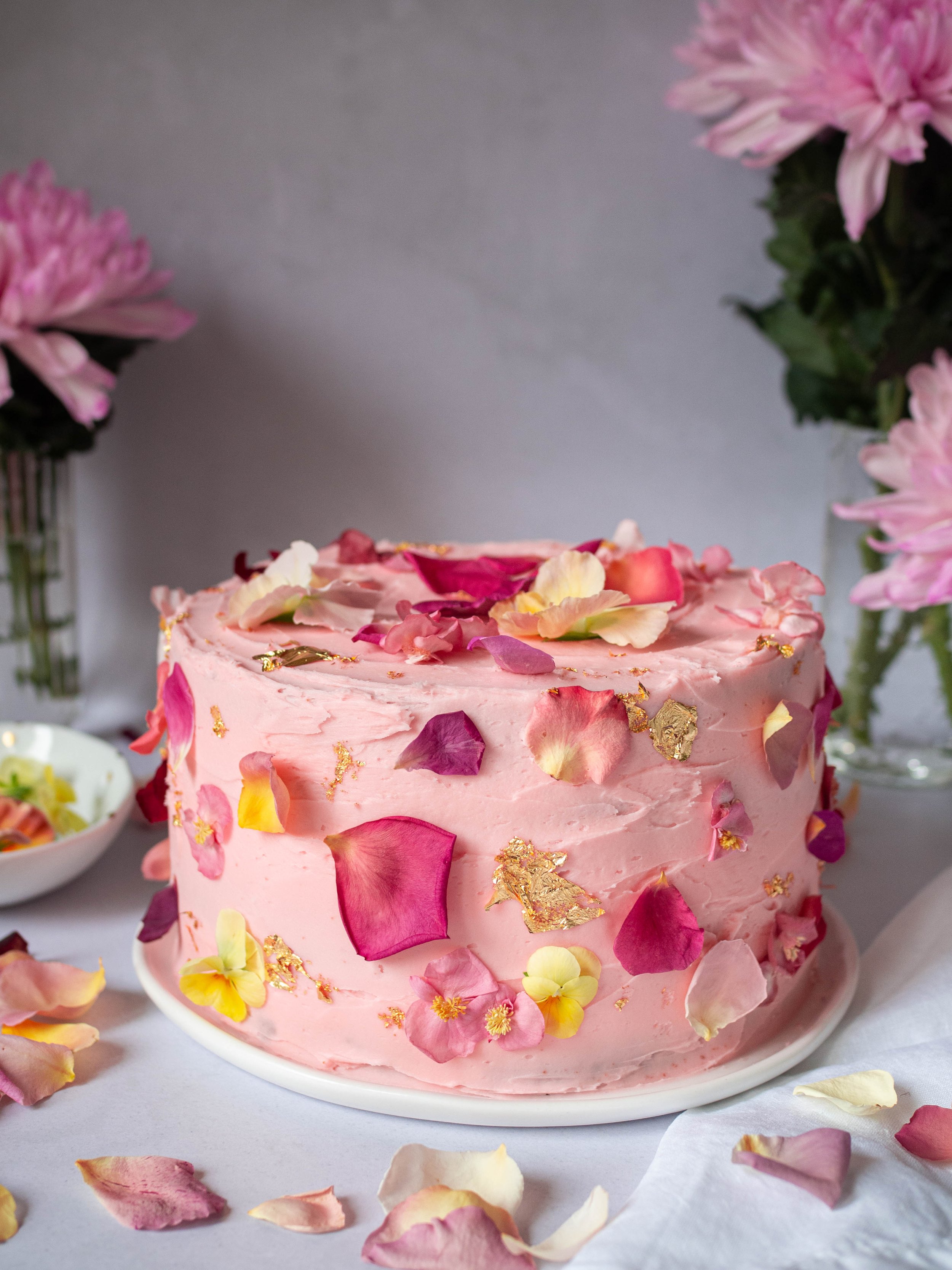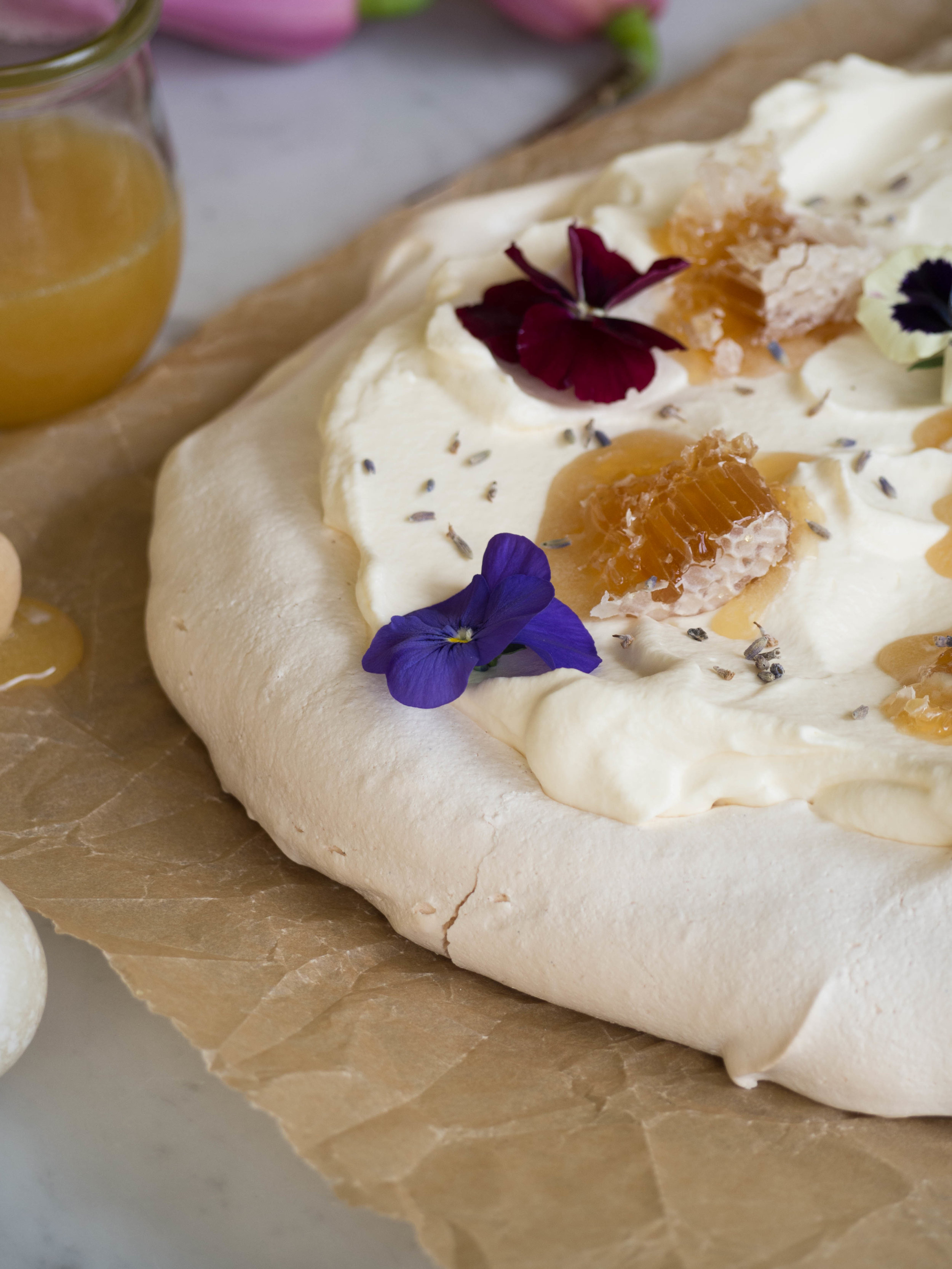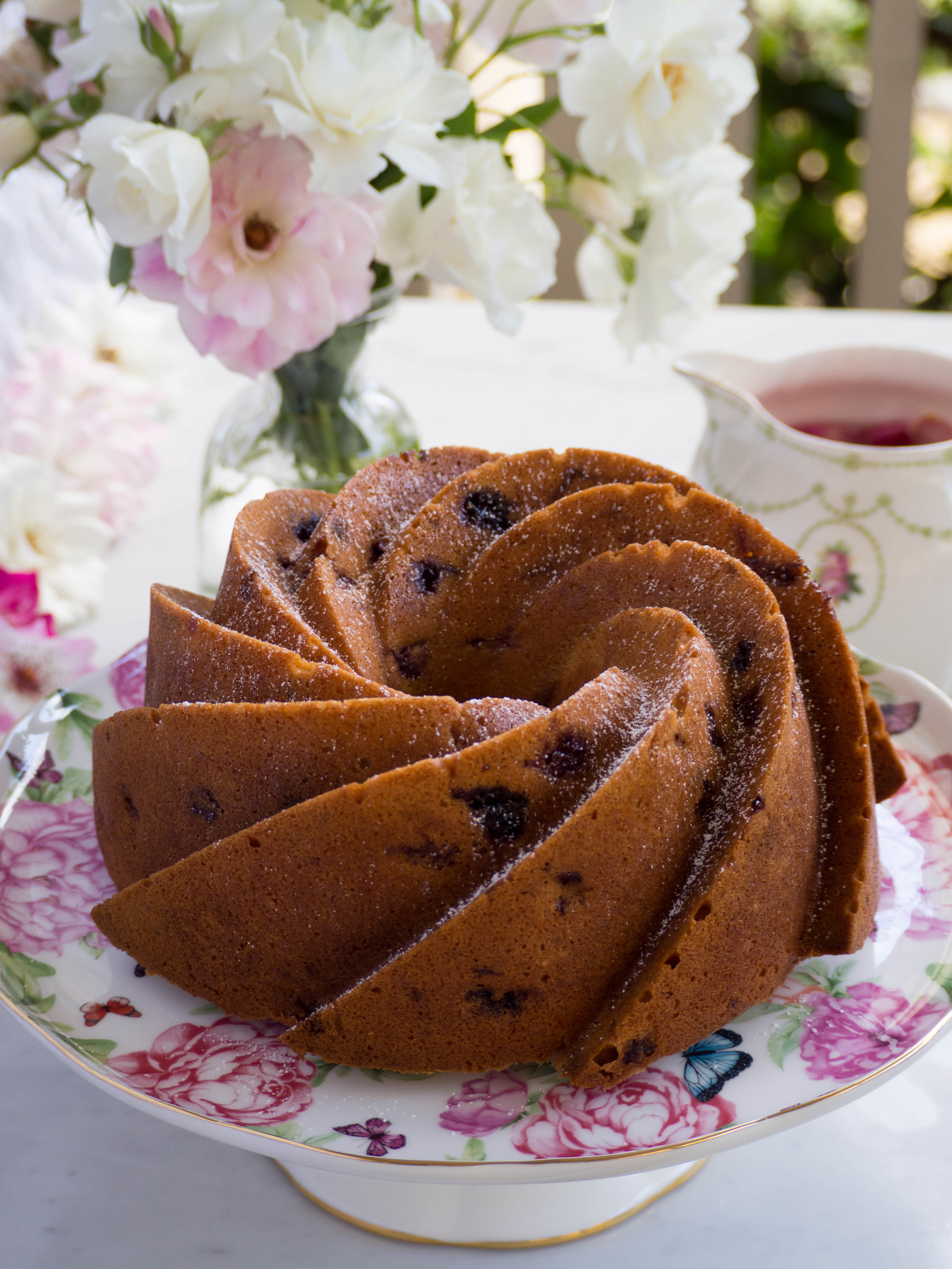Let them eat cake, is a phrase we all associate with Marie Antoinette, despite the fact that she probably never actually said it.
The phrase and the opulence that can also be associated with the French Royal family which Marie Antoinette married into, has inspired many an artist, film maker and cake decorator over the years.
This history and opulence was in part the inspiration for this cake, which I recently developed for The Healthy Baker. The brief was that the cake must have pink icing, and use flowers to decorate.
While maybe not as opulent as some ‘let them eat cake’ inspired cakes, I think this cake presents well but is also quite easy to achieve.
You will see that the buttercream icing is not perfectly smooth, this is not only as I felt it unnecessary as the whole cake will be covered with decoration, but it also avoided the cake having too thick a layer of buttercream. Since the cake is filled with passionfruit curd, that is where the cake is getting a lot of its flavour, and too much buttercream may detract from that.
Too make the cake even easier I used bought passionfruit curd, and in terms of the decoration I can assure you that very little skill is involved when it comes to placing the flowers (both fresh and freeze dried) all over the cake! I also used some edible gold leaf which was easy to buy online from Woolworths.
You can find the recipe via The Healthy Baker’s website - it would make a great celebration cake or just a fun weekend baking project!
Recipe development projects like this one, are my favourite part of my job. Creating a recipe with businesses products means I get to think of new ideas, be creative and also try new things. I also get to eat the cake after, which is a pretty good job perk if you ask me!
If you have a product you’d love me to create some recipes with, just contact me and we can chat about what your business needs. Recipes for your website or blog are great ways to show your customers how to use your products, and the images are great for social media and other marketing content too!
Click here to find out a little bit more about working with me.






















































